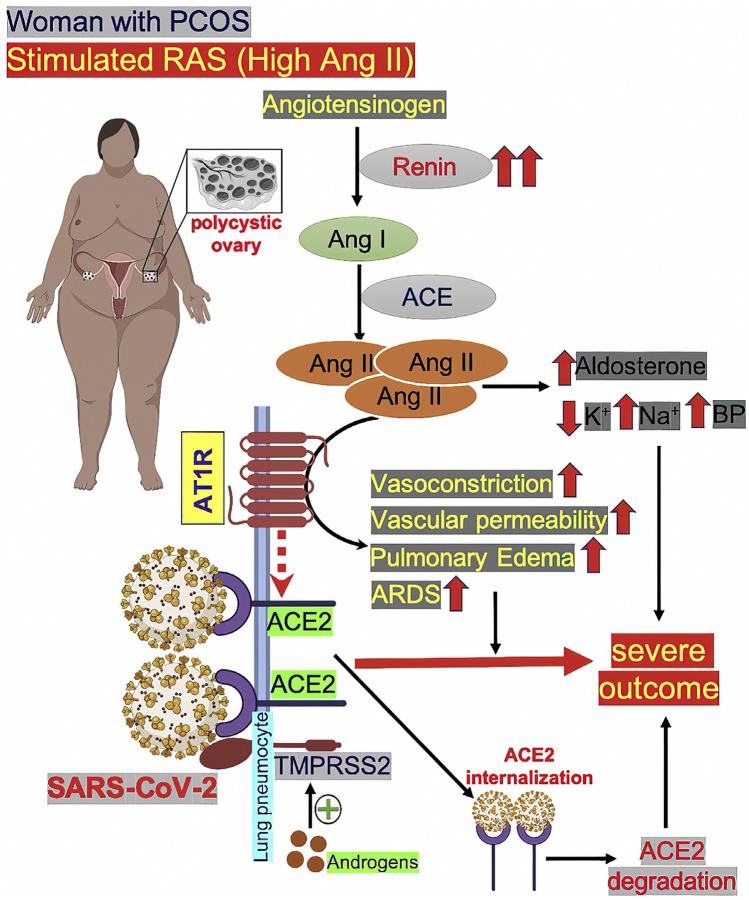Fig. 2.
In women with polycystic ovary syndrome (PCOS), plasma renin levels are high, and the renin-angiotensin system (RAS) is overactivated, leading to high amounts of Ang II. Excess Ang II causes ACE2 to dissociate from the angiotensin receptor 1 AT1R (AT1R) and bind to AT1R. The binding of angiotensin II to AT1R results in vasoconstriction, increased vascular permeability, pulmonary edema, and acute respiratory distress syndrome (ARDS). When ACE2 becomes detached from AT1R (indicated by broken red arrow), it increases the entry point for SARS-CoV-2 into pneumocytes. The viral infection might also be facilitated by overexpression of androgen-induced expression of TMPRSS2 in PCOS, as the androgen levels are higher. Upon binding with ACE2, the SARS-CoV-2–ACE2complex becomes internalized and undergoes proteasomal degradation of ACE2 inside the cell. This may cause the reduction of ACE2 levels in lung cells. High Ang II levels also stimulate the adrenal gland to increase aldosterone level, which, in turn, decreases potassium and increases sodium levels, ultimately causing increased blood pressure. Taken together, these mechanisms could result in severe outcomes inCOVID-19-infected women with PCOS (from Moin et al. [116]; Metabolism Open [115], with permission of CC-Creative Commons License Deed)

